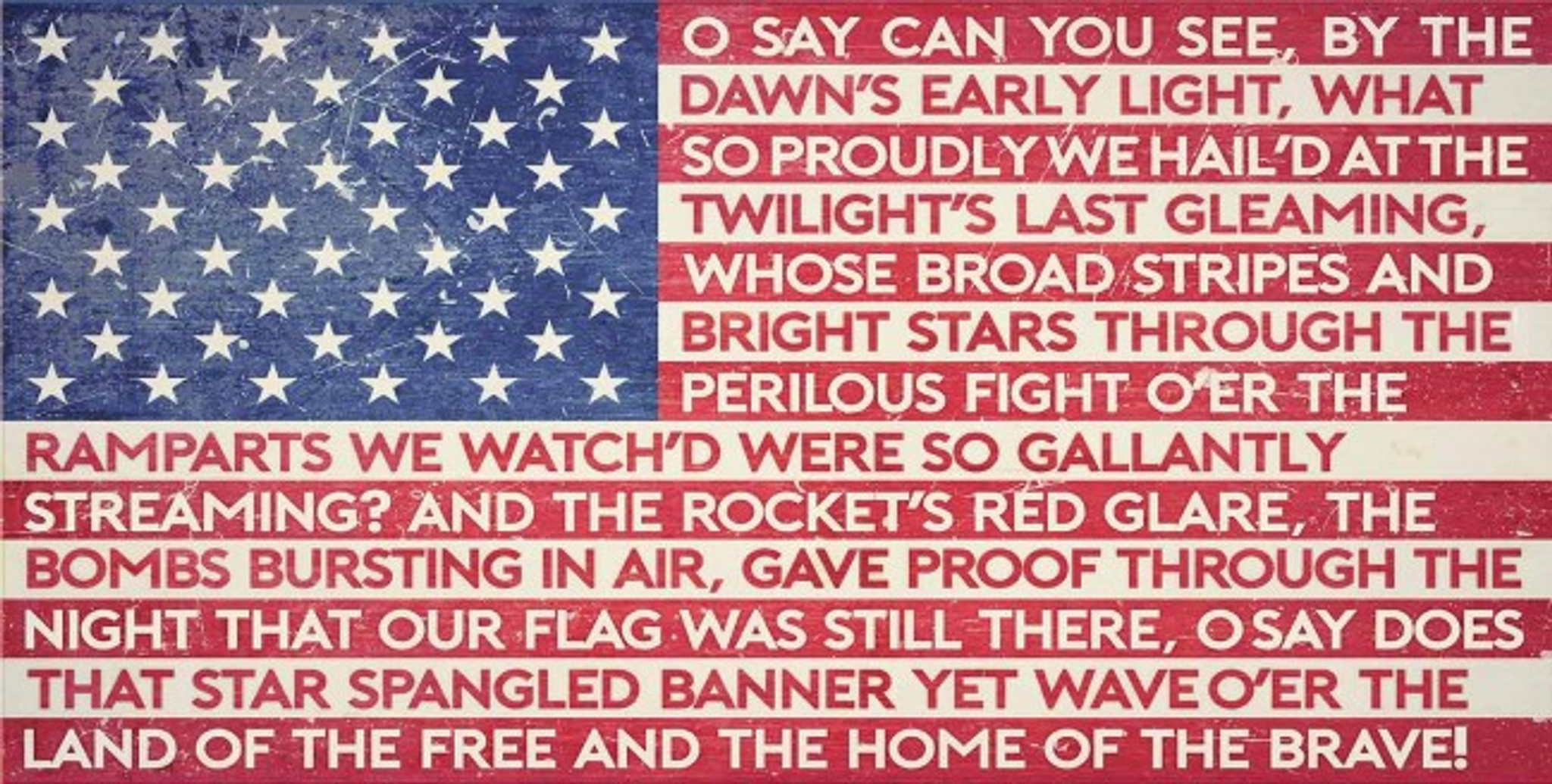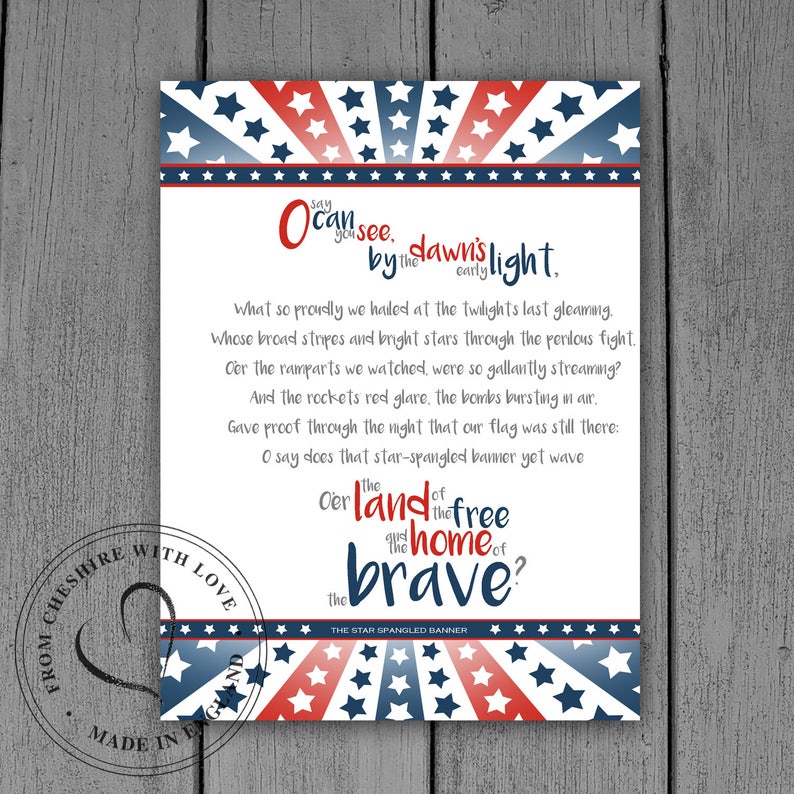

Now it catches the gleam of the morning’s first beam, In full glory reflected now shines in the stream, On the shore dimly seen through the mists of the deep, Where the foe’s haughty host in dread silence reposes, What is that which the breeze, o’er the towering steep, As it fitfully blows, half conceals, half discloses?


O’er the land of the free and the home of the brave? What so proudly we hail’d at the twilight’s last gleaming, Whose broad stripes and bright stars through the perilous fight O’er the ramparts we watch’d, were so gallantly streaming?Īnd the rocket’s red glare, the bomb bursting in air, Gave proof through the night that our flag was still there, O say does that starspangled banner yet wave O say can you see, by the dawn’s early light, Performance: Whitney Houston with The Florida Orchestra, conducted by Jahja Ling (1991) “The Star-Spangled Banner” Composer: John Stafford Smith 1. The text of its earliest surviving draft appears below, transcribed from his handwritten manuscript. Key began his poem onboard the ship and finished it shortly after his release from captivity. Famously, he knew that the American forces had emerged victorious when he saw their flag flying over Fort McHenry in the morning light on September 14, 1814.

Key subsequently witnessed the nighttime battle from aboard a British ship. Although Key and his compatriots were successful in their mission, they were held captive after overhearing British officers plan an attack on the city of Baltimore. During the War of 1812, Key travelled with a delegation to the British flagship HMS Tonnant to negotiate a prisoner exchange. The tune is several decades older than the text, but our story will begin with the famous poem by Francis Scott Key (1779–1843). United States of America: “The Star-Spangled Banner”Īs is the case with almost every national anthem, the words and the tune to “The Star-Spangled Banner”1 were created by different people at different times.


 0 kommentar(er)
0 kommentar(er)
